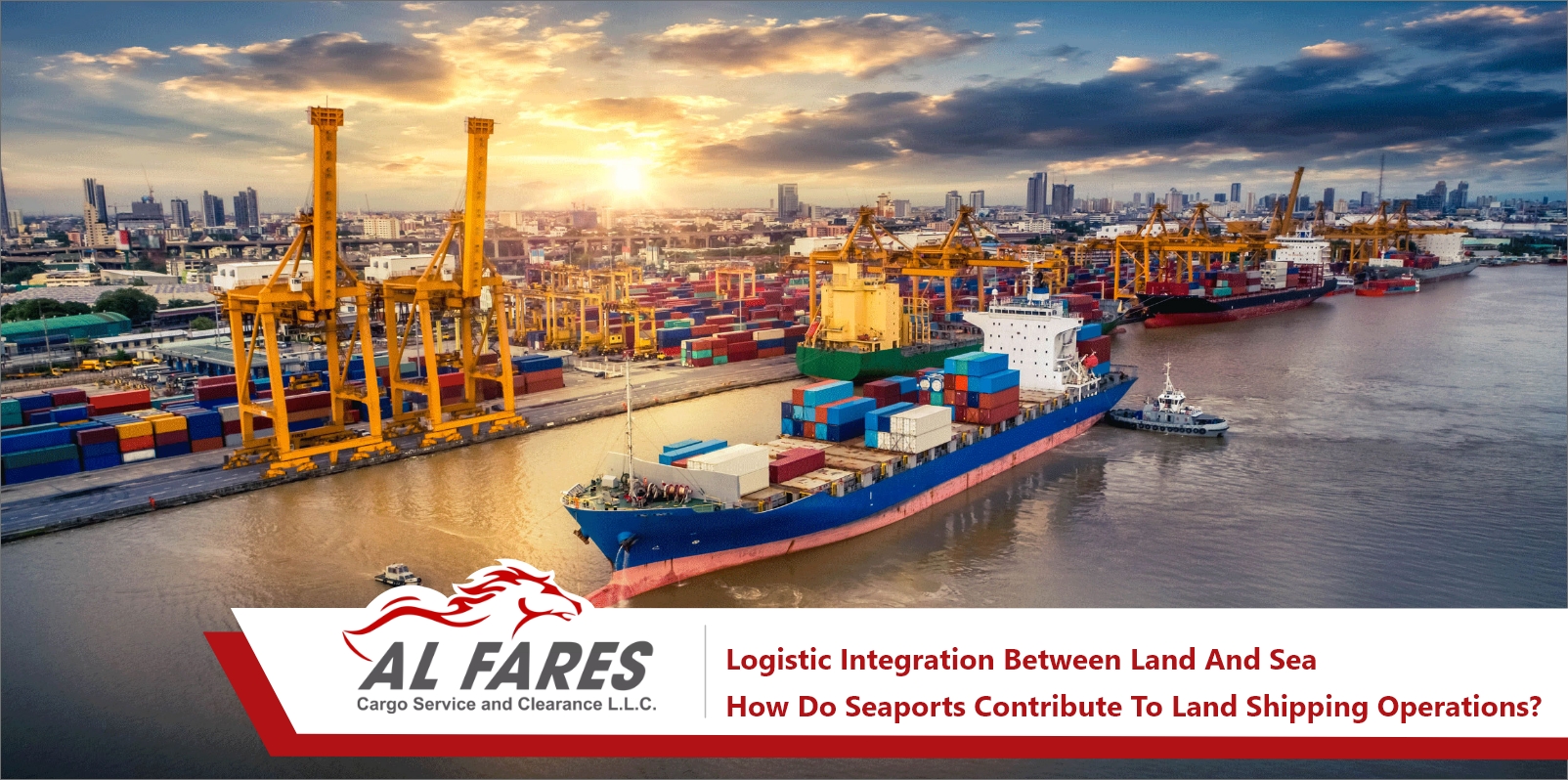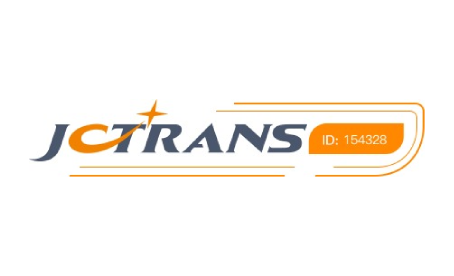Shipping and transportation operations are among the most crucial elements in the global supply chain, requiring effective organization and coordination to ensure smooth processes at the lowest possible cost. In this context, logistic integration plays a crucial role in managing these operations, especially concerning communication and coordination between different modes of transportation.
Seaports, in particular, represent fundamental hubs in integrating shipping operations between land and sea. They serve as the interface between land and maritime transportation, playing a vital role in facilitating the transition of goods between these two modes. Ports function as crucial collection and distribution points, where goods are loaded onto and unloaded from ships, as well as transferred to and from land transportation.
Meaning of Logistic Integration Between Land and Sea:
Logistic integration refers to the collaboration and coordination among various elements and stakeholders involved in the shipping and transportation process, aiming to achieve a smooth and efficient flow of goods from production points to consumption points. Logistic integration aims to improve operational efficiency, reduce costs, and achieve customer satisfaction.
Regarding shipping and transportation operations between land and sea, logistic integration can be achieved through several means:
First, Continuous communication and coordination between different modes of transportation, such as trucks, ships, and trains. Scheduling shipments, managing paperwork, and coordinating delivery times are essential aspects of this integration.
Second, Seaports play a crucial role in achieving logistic integration. Ports must be equipped with the necessary infrastructure to facilitate quick and efficient loading and unloading of goods. This includes appropriate loading and unloading platforms and equipment, as well as providing warehouses and temporary storage for goods.
Third, Logistic integration can be achieved through the use of information technology and logistic information systems. Modern software and applications can be used to track shipments, manage inventory, and analyze data, contributing to improved visibility, estimations, and strategic decision-making.
Additionally, comprehensive logistic services that support shipping and transportation operations between land and sea should be provided. This includes integrated services for storage, packing, packaging, distribution, shipping, and customs clearance within a unified framework, enhancing efficiency and reducing complexities and costs.
The Importance of Seaports:
Seaports play a vital and decisive role as major gateways in global transportation networks. Here are some key importance aspects of seaports in land shipping operations:
1.Access to Global Markets:
Seaports provide direct access to global markets. Oceans and seas serve as efficient means of transporting goods worldwide, making seaports the main gateway for international trade. They contribute to expanding the scope of land shipping.
2.Multimodal International Transport:
Seaports enable logistic integration between maritime and land transportation. They can serve as transfer points for goods between ships and trucks or trains, facilitating multimodal shipping operations and reaping the benefits of both maritime and land transport.
3.Infrastructure and Facilities Provision:
Seaports feature advanced infrastructure and diverse facilities to support shipping and land transportation operations. These facilities include loading and unloading platforms, warehouses, storage centers, and customs clearance facilities. These facilities help facilitate and expedite land shipping operations and provide temporary storage solutions for goods.
4.Strategic Logistic Presence:
Seaports are usually strategically located on coasts or near major waterways. This strategic positioning allows easy access to land transportation networks and distribution in surrounding regions. Some ports may have unique geographical advantages, such as proximity to major cities or vital industrial locations.
5.Employment Opportunities and Economic Development:
Seaports are essential sources for job creation and economic development in their surrounding areas. They accommodate a diverse workforce in areas like shipping, customs clearance, storage, and land transportation. Additionally, port activities boost other economic activities like logistic services, supply, and manufacturing industries.
How Seaports Contribute to Achieving Logistics Integration Between Land and Sea?
Seaports play a significant role in achieving logistics integration between land and sea through several means.
Firstly, they provide infrastructure supporting land freight operations, such as loading/unloading platforms, warehouses, and internal transportation systems. This infrastructure creates a suitable environment for the efficient and effective movement of goods.
Secondly, ports coordinate scheduling and timing for land freight operations, ensuring coordination and smooth flow of goods between trucks and ships. Loading and unloading activities are organized systematically, and necessary transportation means are provided to transport goods from ports to final destinations through the land network.
Thirdly, maritime ports offer integrated logistic services for land freight, including temporary storage, distribution, packaging, re-packaging, and classification. These services add value to freight operations, contributing to efficiency and cost reduction.
Ultimately, logistics integration between land and sea contributes to environmental sustainability. Fuel savings and carbon emissions reduction can be achieved by utilizing maritime transportation for long segments of the journey, while land transportation is employed for the last leg of the trip with lower costs and emissions.
Modern Technologies Used for Achieving Logistics Integration Between Land and Sea:
Logistics integration between land and sea entails coordinating and integrating land and maritime transport to achieve optimal performance in the supply chain. This requires the use of modern and innovative technologies that contribute to enhancing integration and improving efficiency in shipping and transportation operations. Here, we highlight some modern technologies used to achieve logistics integration between land and sea:
1.Supply Chain Management (SCM) Systems:
SCM systems enable the integration and analysis of supply and demand information, distribution, storage, and shipping in a comprehensive manner. SCM software is utilized for monitoring and tracking goods, production planning, and inventory management, contributing to improving visibility, supply chain management, and integration between transportation modes.
2.Information and Communication Technology (ICT):
Information technology and communication technology play a crucial role in enhancing logistics integration. These technologies include the use of inventory management systems, shipping software, and cargo tracking systems using barcodes or RFID technologies. Rapid and efficient exchange of information among stakeholders helps improve visibility, reduce costs, and enhance productivity.
3.Smart Logistics Networks:
Smart logistics networks rely on the use of smart technologies such as the Internet of Things (IoT), Artificial Intelligence (AI), and Big Data analytics to achieve logistics integration. Smart sensors and monitoring devices are used for tracking the movement, storage, and distribution of goods, and data analysis is performed to make informed decisions and optimize supply chains.
4.Smart Transportation:
Smart transportation involves leveraging technology to improve transportation and cargo management. Technologies used include trucks equipped with smart navigation systems, mobile applications for cargo tracking and enhanced communication between drivers and customers, smart shipping technologies, and optimal distribution.
The Economic Benefits of Logistics Integration Between Land and Sea:
Logistics integration between land and sea comes with several economic benefits. Here are some key advantages:
1.Reduced Transportation Costs:
Maritime transport is considered one of the most cost-effective means of transportation, allowing large quantities of goods to be shipped at a lower cost compared to land or air transport. Integration between land and sea enables significant savings in transportation costs, contributing to the reduction of manufacturing and trade expenses while enhancing economic competitiveness.
2.Decreased Delivery Time:
While maritime transport is relatively slower compared to land or air transport, it offers an opportunity for bulk and batch shipping. Consequently, economic benefits can be realized by using maritime transport for flexible-time shipments. Companies can acquire large quantities of goods at a low cost, store them near ports, reducing delivery time, and contributing to better order fulfillment.
3.Improved Efficiency and Inventory Management:
Logistics integration between land and sea enhances inventory management efficiency. Companies can use ports as primary distribution centers and store inventory near ports, facilitating faster and more efficient distribution of goods. This integration also allows for cost savings in storage and inventory management by leveraging the advantages of each transportation mode.
4.Access to New Markets:
Logistics integration between land and sea can contribute to business expansion and accessing new markets. Companies can leverage the extensive maritime network to reach distant locations and new markets worldwide, fostering increased business opportunities and economic growth.


 Track Your Shipment
Track Your Shipment
 Online Enquiry
Online Enquiry
 Sign In
Sign In
 English
English

 Alfares Cargo
Alfares Cargo
 Logistic Informations
Logistic Informations
 2023-12-15
2023-12-15












